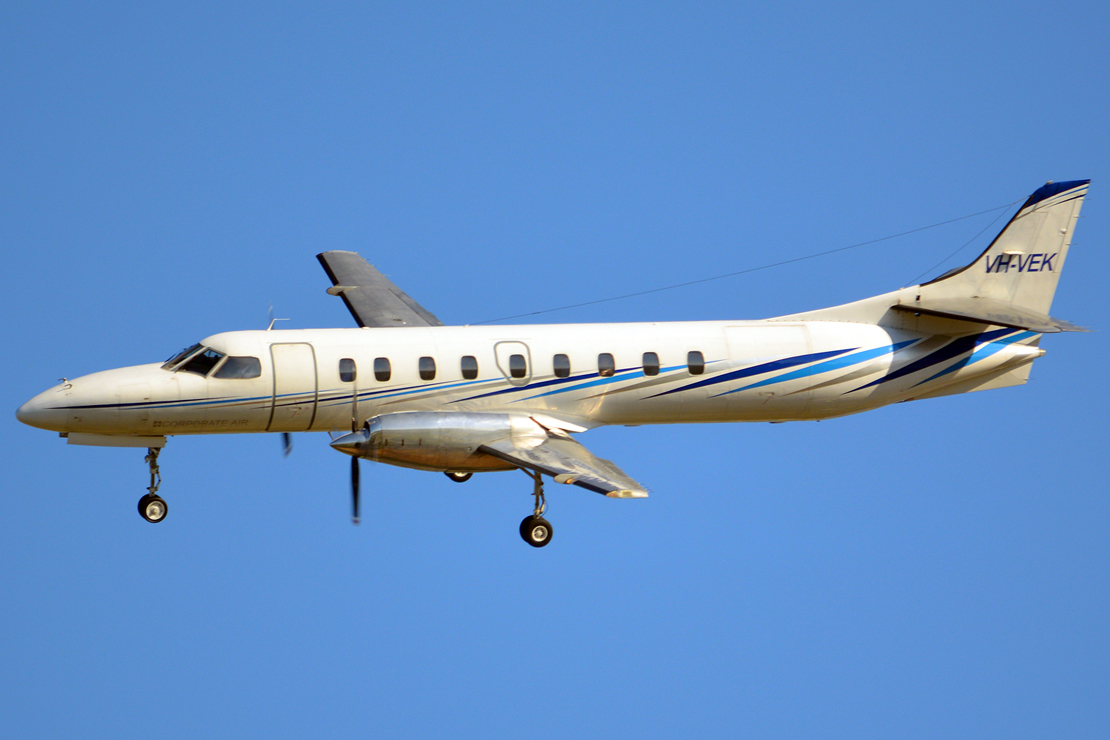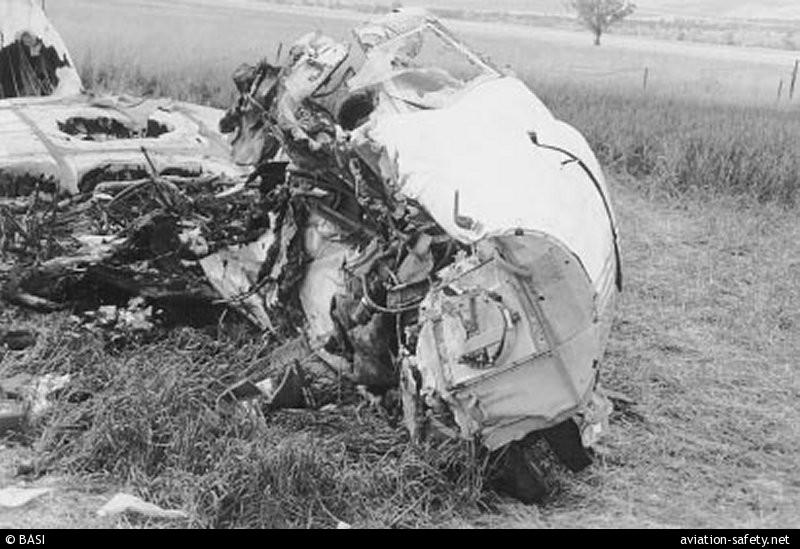16 September 1995 - Tamair
The flight was the second Metro III type-conversion training flight for the co-pilot. Earlier that night, he had completed a 48-minute flight. During the briefing prior to the second flight, the check-and-training pilot indicated that he would give the co-pilot a V1 cut during the takeoff. The co-pilot questioned the legality of conducting the procedure at night. The check-and-training pilot indicated that it was not illegal because the company operations manual had been amended to permit the procedure. The crew then proceeded to brief the instrument approach which was to be flown following the V1 cut.

There was no detailed discussion concerning the technique for flying a V1 cut. The co-pilot conducted the takeoff. Four seconds after the aircraft became airborne, the check-and-training pilot retarded the left engine power lever to flight-idle. The landing gear was selected up 11 seconds later. After a further 20 seconds, the aircraft struck the crown of a tree and then the ground about 350 m beyond the upwind end of the runway and 210 m left of the extended centerline. It caught fire and was destroyed.
The co-pilot and another trainee on board the aircraft were killed while the check-and-training pilot received serious injuries.
The investigation found that the performance of the aircraft was adversely affected by: 1) the control inputs of the co-pilot; and 2) the period the landing gear remained extended after the simulated engine failure. The check-and-training pilot had flown night V1 cut procedures in a Metro III flight simulator, but had not flown the procedure in the aircraft at night. He did not terminate the exercise, despite indications that the aircraft was not maintaining V2 and that it was descending. There were few external visual cues available to the crew in the prevailing dark-night conditions. This affected their ability to maintain awareness of the aircraft's position and performance as the flight progressed. A number of organizational factors were identified which influenced the aviation environment in which the flight operated. These included, on the part of the operating company: 1) an inadequate Metro III endorsement training syllabus in the company operations manual; 2) inadequate assessment of the risks involved in night V1 cuts; and 3) assigning the check-and-training pilot a task for which he did not possess adequate experience, knowledge, or skills. Organizational factors involving the regulator included: 1) a lack of enabling legislation prohibiting low-level night asymmetric operations; 2) deficient requirements for co-pilot conversion training; 3) inadequate advice given to the operator concerning night asymmetric operations and the carriage of additional trainees on training flights; 4) deficient training and approval process for check-and-training pilots; and 5) insufficient quality control of the company operations manual.
The investigation also determined that there was incomplete understanding within the company, the regulating authority, and some sections of the aviation industry of the possible effects of engine flight-idle torque on aircraft performance. Inadequate information on the matter in the aircraft flight manual contributed to this.

Transcript of the Cockpit Voice Recorder (CVR)
Legenda C&T = Check and training pilot
CP = Co-pilot
TWR = Tamworth Aerodrome Controller
NEJ = VH-NEJ
| TIME (EST) | FROM | TO | TEXT |
| 1942.45 | The pilot in command informed the co-pilot that they were going to conduct a V 1 cut. | ||
| 1942.49 - 1943.04 | The co-pilot objected and questioned the legality of night V 1 cuts. The pilot in command replied that such a procedure was legal. The operations manual has been amended and there was no impediment to conducting the procedure. The co-pilot made a further objection. | ||
| 1943.10- 1945.02 | The pilot in command then indicated that they would be taking off on runway 12 and would continue for a runway three zero right VOR/DME approach. The crew then briefed for that approach. | ||
| 1945.04- 1945.17 | The co-pilot asked if they would be flying the approach on two engines. The pilot in command responded that after the V 1 cut, when the aircraft had climbed through 1,000 ft above ground level, he would probably return the aircraft to normal two engine operation. | ||
| 1945.18- 1945.30 | The co-pilot, assisted by the pilot in command, then revised the procedure for the VOR/DME approach. | ||
| 1945.41- 1951.30 | Because of other traffic, the runway 30 VOR/DME approach was not available. The crew was then given a clearance for the runway 12 VOR/DME approach and briefed for that approach. They then completed the after start checks and the taxi checks. | ||
| 1951.32- 1952.45 | The pilot in command then asked the co-pilot for a crew briefing. The co-pilot could not remember the complete briefing and was assisted by the pilot in command. The pilot in command repeated that they were going to conduct a V 1 cut procedure, adding that it was for the purpose of demonstration so the co-pilot would know what to expect. | ||
| 1952.56- 1953.35 | The co-pilot then revised the procedure for the V 1 cut - that he would call for maximum power, that the pilot in command would call positive rate of climb, and then the co-pilot would call for the landing gear to be selected up. The co-pilot continued that he would identify the failed engine and that the pilot in command would confirm the identification. He queried whether zero thrust would be set. This was confirmed by the pilot in command. The co-pilot continued that at V 2 plus five kts, flaps would be selected up and the climb speed after that would be Vyse to the acceleration altitude of nineteen hundred feet. This was corrected by the pilot in command to four hundred feet above ground level, that is, eighteen hundred feet. | ||
| 1953.40- 1956.38 | The crew completed the line-up checks. The co-pilot asked the pilot in command which engine he was going to fail. The pilot in command responded that he might not simulate the failure of an engine. He then indicated that they would use eighty-eight percent engine torque and one hundred knots for V 1 . | ||
| 1956.49- 1956.57 | The crew then requested and was issued a takeoff clearance. | ||
| 1957.00 | C&T | CP | OK we're right to go |
| 1957.03 | CP | C&T | What ah what call do I say here. I have to say set takeoff torque |
| 1957.05 | C&T | CP | Yeah you wait for all my calls and then you say set takeoff torque. OK |
| 1957.13 | C&T | the annunciators clear | |
| 1957.15 | C&T | CP | Ah you have sort of don't fight me on the levers yeah . Everything rise torques and temps |
| 1957.18 | CP | C&T | ah set take |
| 1957.19 | C&T | CP | both airspeeds are alive |
| 1957.20 | CP | C&T | set takeoff torque thanks |
| 1957.22 | CP | C&T | should I be pushing up cause I'm not doing much with those power levers there |
| 1957.25 | C&T | CP | that's right. I should be doing it for you or helping you |
| 1957.29 | C&T | CP | torque set |
| 1957.30 | C&T | CP | vee one. rotate |
| 1957.33 | C&T | CP | just ten degrees edward. yeah |
| 1957.38 | C&T | CP | I think we've got an engine failure |
| 1957.39 | CP | C&T | yep |
| 1957.41 | C&T | CP | set max power eh |
| 1957.41 | CP | C&T | are you gonna |
| 1957.42 | CP | C&T | set oh sorry set max power |
| 1957.43 | C&T | CP | yep you got it |
| 1957.44 | CP | C&T | positive rrr |
| 1957.45 | C&T | CP | yeah positive rate yeah |
| 1957.46 | CP | C&T | gear up thanks |
| 1957.47 | C&T | CP | yeah//sound of gear warning horn starts// |
| 1957.50 | CP | C&T | it's the ah left engine |
| 1957.51 | C&T | CP | vee two thanks |
| 1957.53 | CP | C&T | left engine |
| 1957.54 | C&T | CP | just don't lower the nose too much. don't fight it |
| 1957.55 | C&T | CP | that's it. yair left engine we've got no egt and low fuel flow there |
| 1958.00 | CP | C&T | (arthen) we'll ah feather the left then thanks |
| 1958.02 | C&T | CP | ok vee two thanks hold vee two |
| 1958.05 | C&T | CP | we're descending. feather the left one. ok it's feathered |
| 1958.06 | // sound of gear warning horn stops // | ||
| 1958.07 | // non pertinent words // // sounds of impact// | ||
| 1958.09 | Recording ends |

